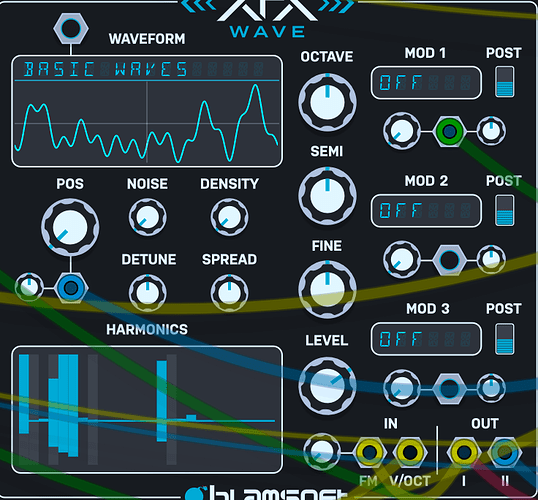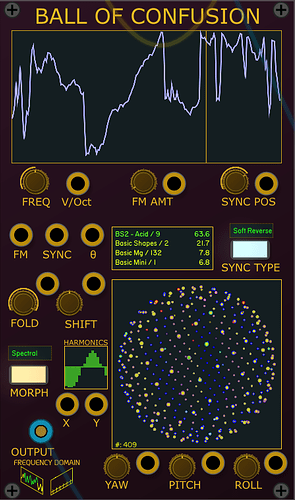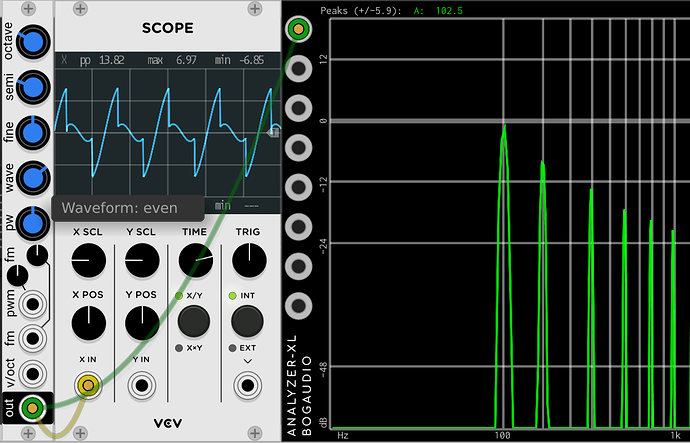Well…without any explaining, it is difficult to transfer useful information.
I’ll just try to make some sense without making things to complicated (so I might cut some corners here and there).
Let’s start by stating that several hundred years ago some french guy (Joseph Fourier) discovered that you can recreate any periodic function (waveform) by just summing enough sine waves (harmonics). He also delivered the math needed to “extract” the harmonics (their frequencies and amplitudes). The Fourier Transform.
Each “bar” vertically represents the amplitude (“loudness”) of a single harmonic (a pure sine wave). The horizontal axis represents the frequencies. For a harmonic series, the first one is the root (“the note”). The others are multiples of the roots frequency (so 1x, 2x,3x,4x and so on). If you sum the sines, you get the waveform.
E.g. a saw has all harmonics with the ampitude 1 divided by its rank (so 1=1/1, 2=1/2, 3=1/3 and so on. Same for a square (50% pulse), but odds only (so 1=1/1, 3=1/3, 5=1/5 and so on). A triangle is like a square, but amplitudes ar 1/rank squared (so 1=1/1, 3=1/9, 5=1/25 and so on, sort of a low pass filtered square). Usefull info, since most synths will offer these basic shaped (though seldomly mathematically perfect).
So…since you can (re)create the waveform from these individual sines, it follows that if you change the amplitude any of these sines, the shape of the waveform will change. The other way around: if you change the waveshape, the sines needed to (re)create that waveform will also change (e.g. amount, frequencies and ampitudes). So…in general it’s a reversible transformation from time domain to frequency domain and vice versa.
Now I left out one more detail: the phase of each harmonic is also relevant. Usually the phases are represented below the horizontal line (and are often left out / static). Just changing the phase will also affect the resulting sum (waveform). Most of the time you can only shape/modulate the individual amplitudes. Sometimes phases as well.
So…if the shape of the waveform changes, it’s harmonic content (timbre/sound) will change. Same if you change the harmonic content directly, changing amplitude and/or phase of harmonics.
Synthesis priciples that manipulate waveshapes use this. Like waveshaping and amplitude, frequency or phase modulation. Generally this “deforming” will lead to non-lineair changes to the harmonic content.
Since additive synthesis (this summing of sines with their own frequencies and amplitude and modulation) is tedious work it never got to popular. A handfull of synths supported it as a main feature. Mainly in the digital domain. Like the Fairlight CMI and NE Synclavier (which even supported resynthesis) and the Kawai K5 / K5000 and the Kurzweil K150FS. But you can also via a Hammond Drawbar organ as an analog additive synthesizer implementation.
I wonder how many people will actually have ploughed through so many words and even read this last line.



